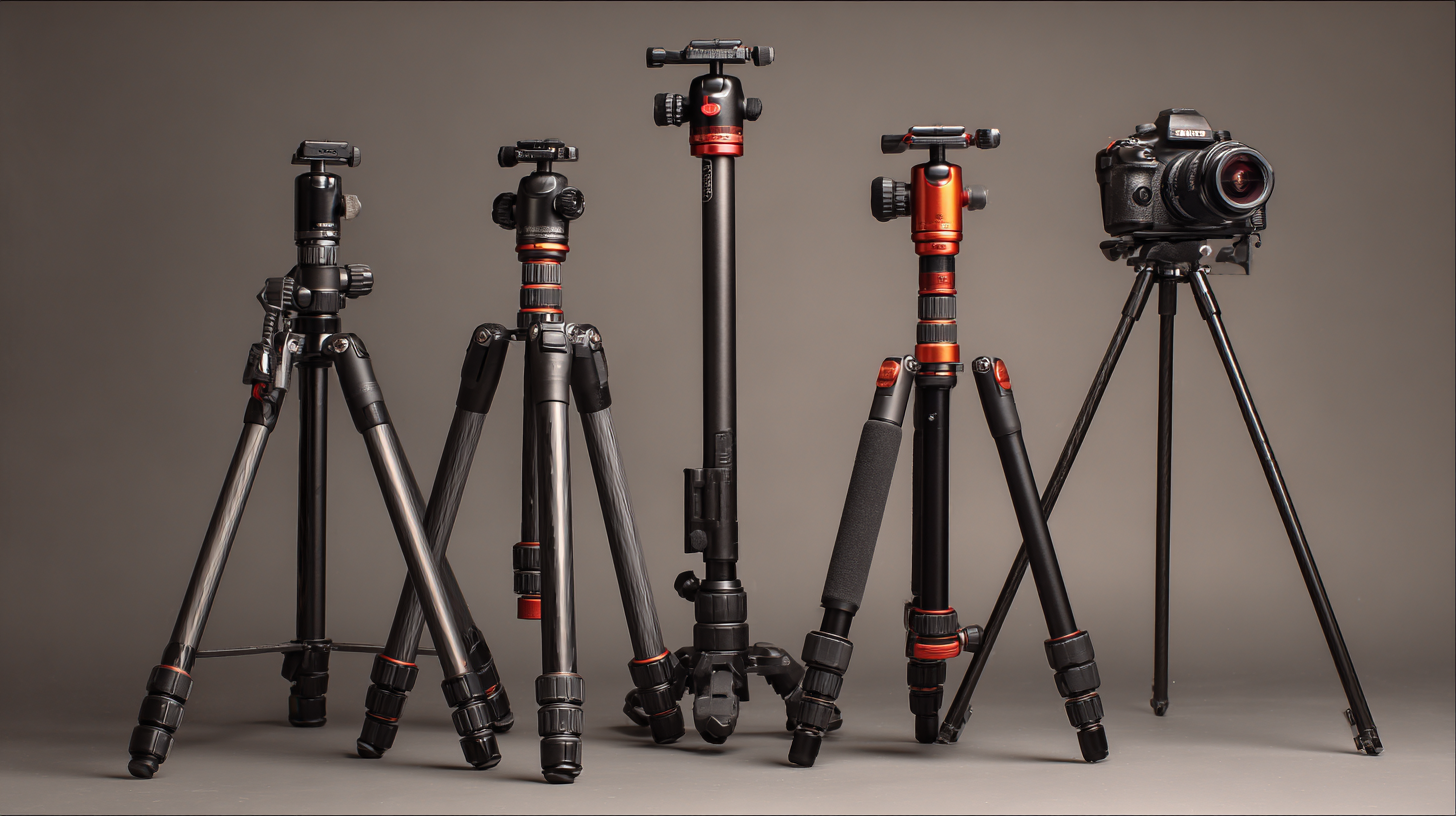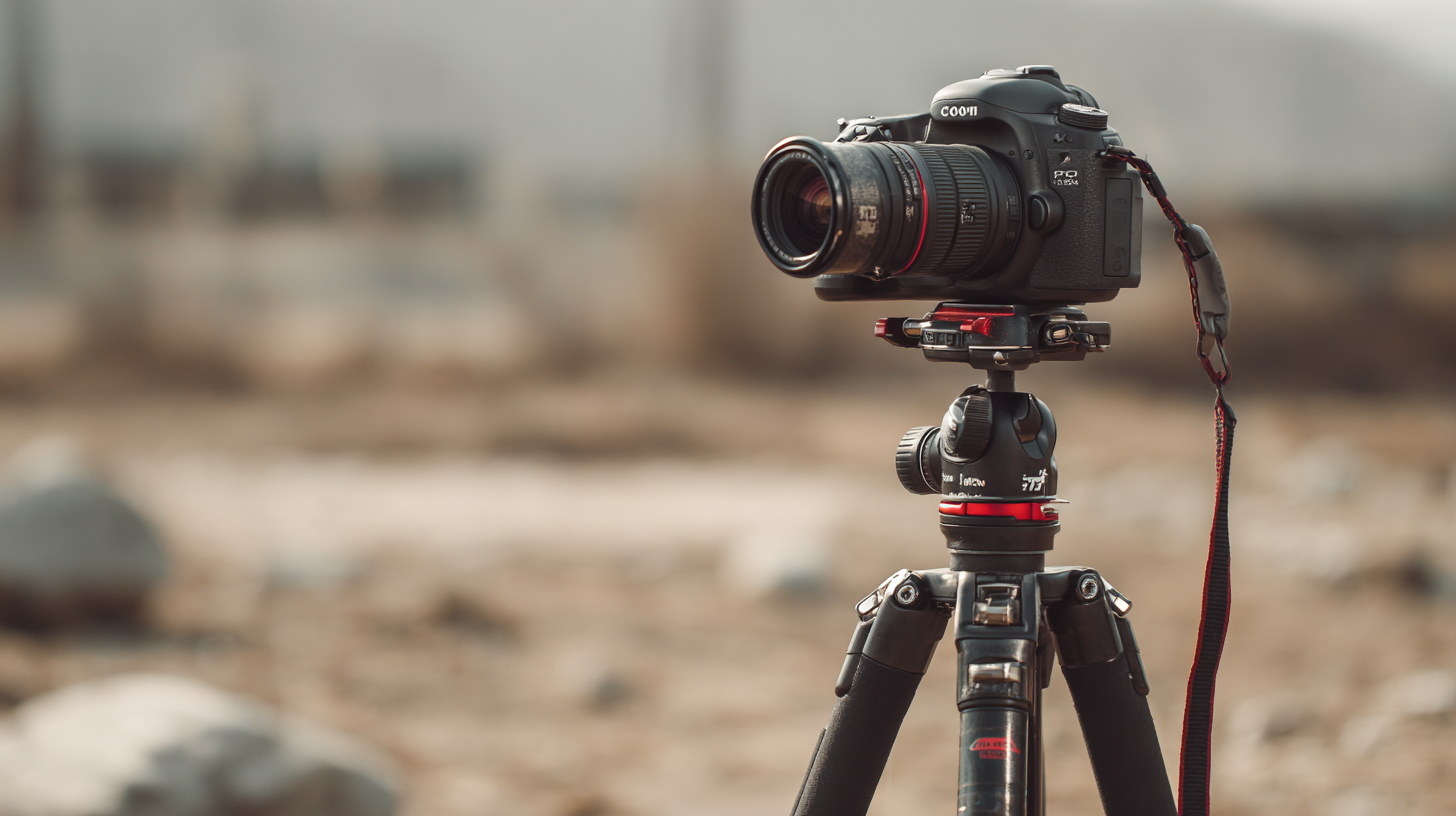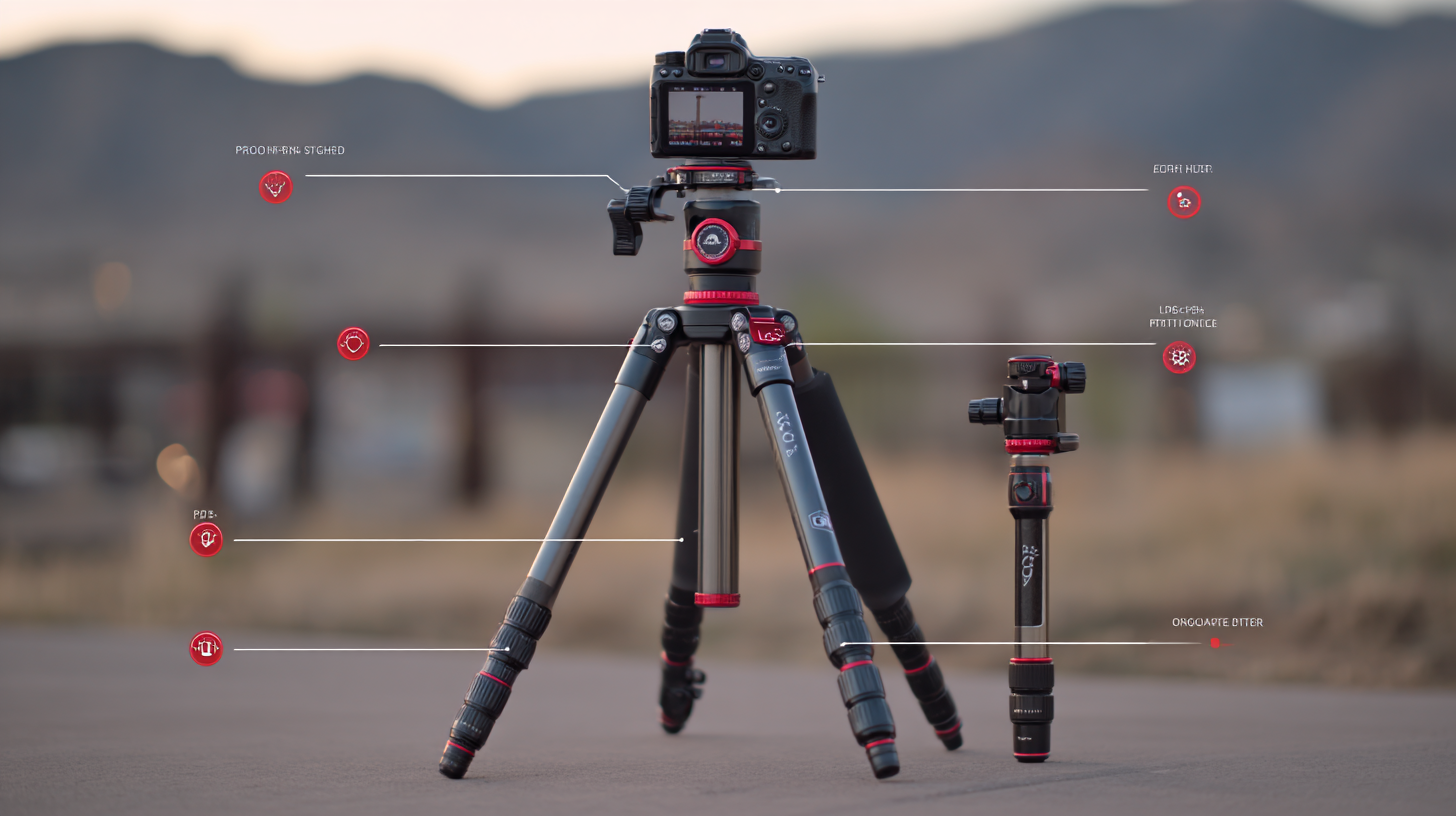In the world of photography, the right equipment can make all the difference, and among the essentials is the Professional Tripod. This versatile tool not only provides stability but also opens up a realm of creative possibilities for photographers of all skill levels. Whether you’re capturing breathtaking landscapes, making long exposure shots, or experimenting with low-light conditions, having a reliable tripod can elevate your photography skills to new heights. In this ultimate guide, we will explore the 15 best features to look for in a Professional Tripod, ensuring that your investment enhances your shooting experience. From lightweight portability to robust stability, understanding these key features will empower you to make informed choices and achieve stunning results in your photographic endeavors.

When selecting a professional tripod, certain key specifications can significantly enhance your photography experience. Stability is paramount; a tripod's weight and material directly influence its performance. A study by the Camera and Imaging Products Association noted that tripods made from carbon fiber tend to be 40% lighter yet 20% stiffer than their aluminum counterparts. This combination of lightweight and rigidity allows for safer handling in various environments, making them ideal for outdoor and landscape photography.
Another essential feature to consider is the load capacity of the tripod. According to research from Imaging Resource, a tripod should comfortably support at least two to three times the weight of your camera and lens setup. This ensures not only stability but also reduces the risk of collapsing during use. Additionally, adjustable leg angles and multi-section legs offer versatility in composition, enabling photographers to achieve low-angle shots or navigate uneven terrain effortlessly. By carefully examining these specifications, photographers can invest in a tripod that elevates their skills to new heights, ultimately leading to enhanced creativity and better image quality.
| Feature | Description | Importance Level |
|---|---|---|
| Material | Aluminum vs. Carbon Fiber | High |
| Weight | Portable for travel | Medium |
| Max Height | Suitable for standing shots | High |
| Min Height | For low angle shooting | Medium |
| Load Capacity | Stability for heavier cameras | High |
| Head Type | Ball head vs. Pan-tilt head | High |
| Folded Size | Compact for travel | Medium |
| Stability Features | Spiked feet, hooks for weight | High |
| Leg Locks | Twist locks vs. Flip locks | Medium |
| Quick Release Plate | Ease of camera attachment | High |
| Panning Capability | Smooth horizontal movement | Medium |
| Price Range | Budget vs. Premium options | High |
| Warranty | Duration and coverage | Medium |
| User Reviews | Feedback on performance | Medium |
| Accessories | Available add-ons like hooks, bags | Low |
The importance of stability in photography cannot be overstated; a high-quality tripod can drastically reduce the risk of blurry images, letting you capture sharp, detailed photos. Research indicates that up to 70% of photogenic opportunities can fall prey to camera shake, especially in low-light conditions or when using longer focal lengths. By investing in a sturdy tripod, photographers can significantly enhance their output quality, ensuring every shot is clear and well-defined.
Tips for choosing the right tripod include considering adjustable height and weight capacity, which can provide versatility for different shooting scenarios. Additionally, look for features like a quick-release plate, which allows for seamless transitions between handheld and tripod shots. Make sure to also evaluate your shooting style—certain tripods cater specifically to landscape photography, while others are designed for travel and portability.
Furthermore, it's essential to remember the role of image stabilization. When using a tripod, turning off your camera's image stabilization may be beneficial. Some studies suggest that having stabilization on can actually introduce micro-movements that lead to blurriness, counteracting the very stability a tripod provides. Therefore, understanding how to maximize your equipment's capabilities is crucial in capturing that perfect shot.

When it comes to professional photography, weight and portability are essential features that can significantly impact a photographer's experience. According to a recent survey conducted by the American Photographic Association, 68% of photographers cited travel weight as a crucial factor when selecting photography gear. For on-the-go photographers, a lightweight tripod that doesn't compromise stability is key to achieving those stunning shots in various environments.
The balance between durability and portability is exemplified by materials used in tripod construction. Data from the Professional Photographers of America reveals that carbon fiber tripods are preferred by 75% of professionals looking for a lightweight option while maintaining strength. A carbon fiber tripod typically weighs about 30% less than its aluminum counterpart, making it easier to carry during long shoots.
As portable tripods continue to evolve, features like compact folding mechanisms allow photographers to pack their gear efficiently without sacrificing quality or performance. Thus, on-the-go photographers must consider the portability of their tripods to enhance their flexibility and creativity in capturing breathtaking images.
When it comes to choosing the right tripod for professional photography, the material plays a crucial role in performance and usability. Aluminum tripods are often seen as the go-to option for many photographers due to their affordability and durability. They are sturdy and can withstand rough conditions, making them ideal for outdoor shoots. However, aluminum does have its drawbacks; it is heavier than carbon fiber, which may become cumbersome during long shooting sessions or when traveling. Additionally, aluminum can be susceptible to temperature changes, making it less comfortable to handle in extreme weather conditions.
On the other hand, carbon fiber tripods offer significant advantages for serious photographers. The lightweight nature of carbon fiber means that these tripods are easy to carry, allowing for greater mobility during shoots. Furthermore, carbon fiber is exceptionally resilient and has superior dampening properties, which reduces vibrations that can affect image sharpness. Although carbon fiber tripods typically come with a higher price tag, their longevity and superior performance can make them a worthwhile investment for photographers aiming to elevate their skills. In a world where every detail counts, selecting the right material for your tripod can significantly impact your photography experience.
When it comes to enhancing your photography skills, the importance of a professional tripod cannot be overstated. Among the versatile features that can profoundly affect your shooting experience, adjustable legs and quick releases stand out. According to a report by ResearchAndMarkets, over 60% of photographers cite stability and versatility as critical factors influencing their choice of equipment.

Adjustable legs allow photographers to achieve perfect angles and stability on uneven terrain, which is vital for landscape and wildlife photography.
Quick release mechanisms are another pivotal feature that allow photographers to transition swiftly between shots. A survey conducted by the Professional Photographers of America revealed that 70% of professionals favor tripods with quick-release plates for their efficiency and convenience. This feature enables photographers to detach and attach their cameras quickly without fiddling with screws, thereby saving valuable time during crucial moments. In a field where every second counts, having a tripod that combines these functionalities can significantly elevate the quality and ease of your photographic endeavors.
